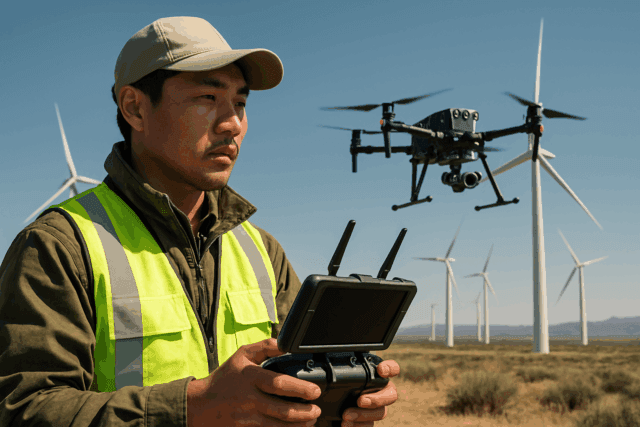The integration of Unmanned Aerial Systems (UAS), or drones, into Search and Rescue (SAR) missions has revolutionized emergency response, offering unparalleled speed, situational awareness, and safety for responders. Drones equipped with high-resolution cameras, thermal imaging, and LiDAR sensors can quickly survey vast areas, locate missing persons, and assess hazardous environments in real-time. However, the immense volume and variety of data generated by these missions present a significant challenge: effective data archiving and retrieval. Without robust data management practices, the valuable intelligence gathered by drones can be lost, become inaccessible, or fail to serve its full potential for current and future operations, analysis, and legal requirements.
The Critical Role of Drone Data in SAR Operations
Drone data, encompassing everything from high-resolution imagery and video to thermal scans and 3D models, is vital for several aspects of SAR missions:
- Situational Awareness: Real-time data streams provide command centers and ground teams with a comprehensive overview of the search area, identifying potential hazards, optimal access routes, and areas of interest.
- Evidence Collection: Data can serve as crucial evidence for post-mission analysis, incident reconstruction, and legal proceedings.
- Training and Improvement: Archived data offers invaluable material for training new pilots, refining search patterns, and developing more effective strategies.
- Resource Allocation: Detailed maps and damage assessments derived from drone data help emergency management agencies prioritize areas for assistance and allocate resources efficiently.
- Long-Term Planning: Data from past missions can inform prevention and preparedness efforts, such as creating Digital Elevation Models (DEMs) for flood prediction in high-risk zones.
Challenges in Managing Drone SAR Data
The unique characteristics of drone data in SAR missions contribute to several management challenges:
- Volume and Velocity: Drones generate massive datasets rapidly, including large video files, high-resolution photographs, and 3D point clouds. This data deluge can overwhelm traditional storage systems.
- Variety: Data comes in diverse formats (visual, thermal, LiDAR, multispectral) from various sensors, requiring versatile storage and processing solutions.
- Time Sensitivity: In SAR, data often needs to be accessed, processed, and analyzed in near real-time during an active mission, but also securely archived for long-term use.
- Accessibility: Teams in different locations, sometimes with limited connectivity, need secure and fast access to critical data.
- Security and Privacy: Drone data can contain sensitive information, including personally identifiable information (PII), requiring strict security measures and adherence to privacy regulations like GDPR.
Best Practices for Data Archiving
Effective archiving ensures that drone data is preserved, protected, and accessible when needed.
1. Develop a Comprehensive Data Management Plan
Before any mission, a clear plan outlining data collection, storage, processing, and retention policies is essential. This plan should involve legal and business stakeholders to define retention periods based on regulations, contractual obligations, and business value.
2. Implement Standard Operating Procedures (SOPs) for Data Collection
Consistency in data collection is paramount for effective archiving and retrieval. SOPs should cover:
- Flight Planning & Execution: Standardized search patterns, altitudes, and camera angles ensure comprehensive and comparable data capture.
- Sensor Configuration: Consistent settings for cameras (e.g., resolution), thermal sensors, and LiDAR units.
- Metadata Generation: Automatically and manually capture critical metadata during the flight.
3. Prioritize Real-Time and Near Real-Time Data Streaming
For active SAR missions, the ability to stream live video and telemetry data back to a command center or Emergency Operations Center (EOC) is crucial for immediate decision-making and coordination. Solutions like AirData UAV can help manage and analyze drone flights, providing immediate visibility into flight, aircraft, and battery health.
4. Secure and Redundant Storage Solutions
Given the criticality of SAR data, storage must be robust, secure, and redundant.
Cloud-Based Storage
Cloud solutions offer scalability, automatic backups, and geographic redundancy, protecting against data loss and ensuring accessibility from various locations. Platforms like JoCloud can integrate multiple data sources and provide real-time information.
On-Site and Hybrid Systems
For faster local access, especially for large files or in areas with limited internet, on-site storage might be used, often in combination with cloud archiving for backup and disaster recovery (hybrid approach).
Data Classification and Tiering
Implement a tiered storage approach based on data’s value, access frequency, and usage patterns (hot, warm, cold data). High-resolution, frequently accessed data can be on high-performance storage, while older, less frequently accessed data can be archived on lower-cost object storage. Automated data lifecycle management tools can enforce these policies.
5. Robust Data Security and Access Controls
Protecting sensitive drone data is crucial.
- Encryption: Encrypt data both during transfer and while at rest in storage.
- Role-Based Access Control (RBAC): Ensure that only authorized personnel have access to specific types of data, preventing unauthorized viewing or dissemination.
- Multi-Factor Authentication (MFA): Add extra layers of verification for accessing critical systems.
- Regular Security Audits: Conduct periodic audits to identify and address vulnerabilities.
- Compliance: Adhere to industry standards like SOC2 Type II and ISO27001, and relevant privacy regulations. The National Institute of Standards and Technology (NIST) is developing cybersecurity guidance for drones, which could become binding for federal agencies and voluntarily adopted by the private sector.
6. Comprehensive Metadata Management
Metadata is the key to effective data retrieval and long-term utility. While there isn’t one universal standard, capturing comprehensive metadata is vital for cataloging, sorting, and analyzing drone images and data.
Essential Metadata Fields include:
- Mission Details: Project name, date, time, location (latitude/longitude), mission objective, incident type.
- Flight Parameters: Drone type, sensor used, flight height (AGL), image overlap, ground control software, flight pattern, weather conditions.
- Pilot/Operator Information: Name, certification.
- Data Characteristics: Resolution, timestamps, file formats (e.g.,.ECW,.jpg2000,.geoTiff), accuracy statements with a 95% confidence level.
- Privacy Considerations: Notes on any PII captured and measures taken for anonymization.
Metadata allows for easy searching, filtering, and understanding of the data’s context, significantly improving retrieval efficiency. Tools exist to help create and manage metadata files.
7. Data Retention and Deletion Policies
Establish clear policies for how long different types of data are retained.
- Legal and Regulatory Compliance: Data retention periods must comply with local, state, and federal regulations. For example, some jurisdictions require surveillance flight documentation to be retained for several years. Government agencies are advised to have approved records retention schedules and periodically review them, ensuring data not relevant to an authorized purpose is not retained beyond 180 days.
- Operational Usefulness: Retain data for the shortest time necessary for its purpose. Data that is no longer legally required or operationally useful should be systematically eliminated.
- Privacy: Implement policies for the anonymization or deletion of incidentally collected personally identifiable information (PII), especially images of minors not relevant to an operation.
Best Practices for Data Retrieval
Efficient data retrieval is as crucial as proper archiving, allowing SAR teams to quickly access the information they need.
1. Centralized, Searchable Database
All archived drone data should reside in a centralized, easily searchable database. This system should leverage the rich metadata collected to allow for advanced queries based on location, date, mission type, drone used, or specific findings.
2. User-Friendly Interfaces and Tools
Provide intuitive interfaces and software tools that enable personnel to quickly browse, preview, and download required data. This includes:
- Mapping Interfaces: Allowing users to search for data based on geographic areas of interest.
- Preview Capabilities: Enabling quick review of images and video without full download.
- Data Analysis Tools: Software that can process raw aerial imagery into actionable intelligence, such as orthomosaic mapping and detection software.
3. Interoperability and Integration
Ensure that the data management system can integrate with other emergency response platforms and tools, allowing for seamless data sharing and workflow integration. This might include integration with Incident Command Systems (ICS) or other geospatial analysis platforms.
4. Training and Proficiency
Regular training for SAR personnel on how to effectively archive, manage, and retrieve drone data is paramount. This includes understanding metadata standards, using the data management software, and adhering to privacy and security protocols. The NIST offers test methods to evaluate and compare sUAS capabilities and remote pilot proficiency, which can be embedded in operational training scenarios.
The Future of Drone Data Management in SAR
The field of drone technology is constantly evolving, with advancements in AI-driven object detection, swarm coordination, and enhanced sensor capabilities. These innovations will further increase the volume and complexity of data, necessitating even more sophisticated data management solutions. Future best practices will likely emphasize:
- AI-Powered Data Analysis: Automated analysis of large datasets for faster detection of subjects or anomalies.
- Edge Computing: Processing data closer to the source (on the drone itself or at the mission site) to reduce bandwidth strain and speed up initial analysis.
- Standardization: Greater international and industry-wide standardization for metadata and data formats to improve interoperability and data sharing between agencies.
- Enhanced Cybersecurity: Continued focus on robust cybersecurity measures, with ongoing development of guidelines from organizations like NIST.
By proactively adopting these best practices for data archiving and retrieval, SAR organizations can maximize the life-saving potential of drone technology and build a resilient, informed, and efficient emergency response ecosystem.





